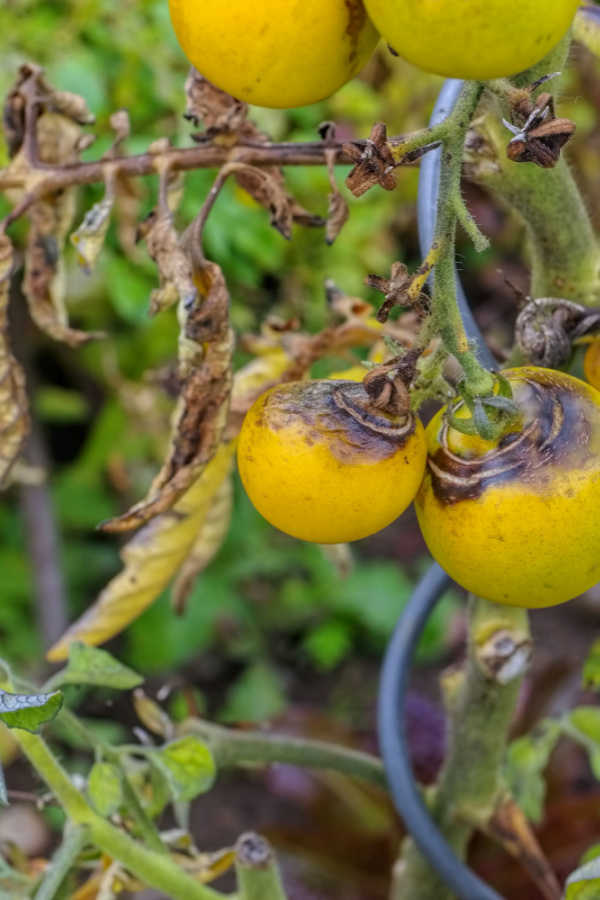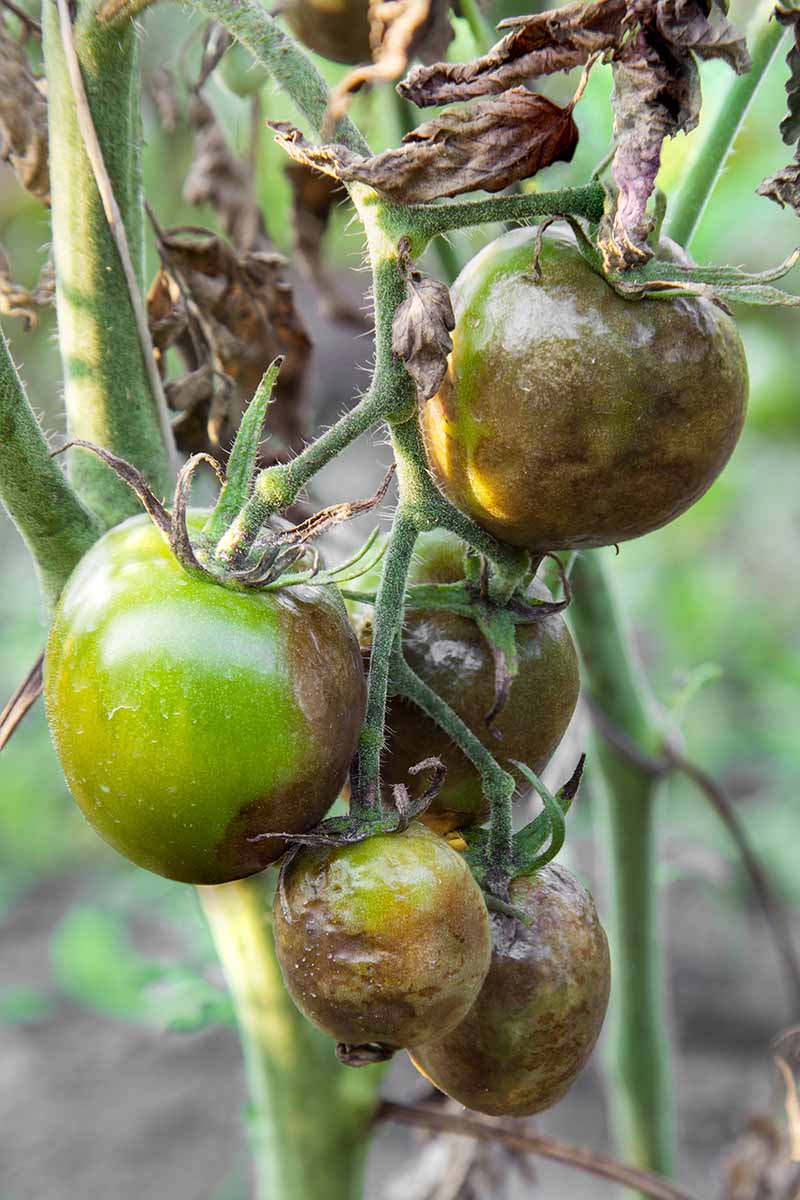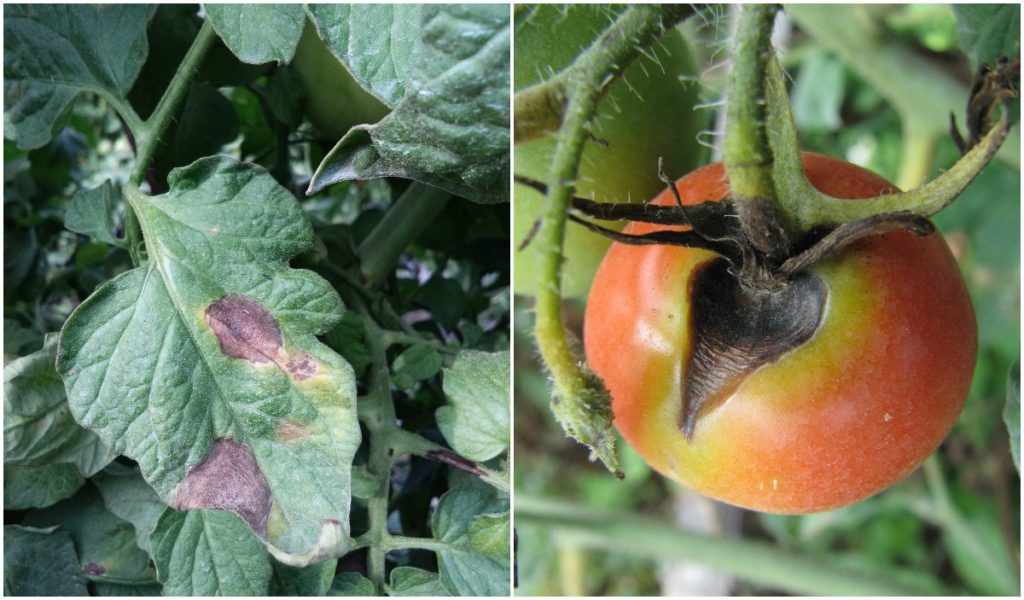What is Tomato Blight and How Does it Affect Your Crop?
Tomato blight is a devastating disease that can have a significant impact on tomato plants, causing widespread damage and reducing yields. It is a fungal disease that affects the leaves, stems, and fruits of tomato plants, causing yellowing, wilting, and eventually, plant death. The disease is highly contagious and can spread quickly through a crop, making it essential for gardeners and farmers to understand what causes tomato plant blight and how to prevent it.
There are several types of blight that can affect tomatoes, including early blight, septoria leaf spot, and late blight. Each type of blight has distinct symptoms, but they all share the common trait of causing significant damage to the plant. Early blight, for example, causes yellowing leaves with dark spots, while septoria leaf spot causes small, dark spots on the lower leaves of the plant. Late blight, on the other hand, causes large, dark lesions on the leaves and stems of the plant.
Tomato blight can be caused by a combination of factors, including weather conditions, soil-borne pathogens, and poor gardening practices. Understanding these factors is crucial in preventing the disease and minimizing its impact on crops. By identifying the causes of tomato blight, gardeners and farmers can take steps to prevent the disease and ensure a healthy and productive crop.
One of the most significant factors contributing to tomato blight is weather conditions. High temperatures, high humidity, and excessive rainfall can all contribute to the development of the disease. When these conditions are present, the fungus that causes blight can thrive, spreading quickly through the crop. Additionally, weather conditions can weaken the plant’s defenses, making it more susceptible to disease.
Soil-borne pathogens are another significant factor in the development of tomato blight. These pathogens can survive in the soil for extended periods, infecting tomato plants through their roots. Once infected, the plant can become a host for the pathogen, allowing it to spread to other plants. Understanding the role of soil-borne pathogens in causing tomato blight is essential in preventing the disease.
Finally, poor gardening practices can also contribute to the spread of tomato blight. Inadequate sanitation, poor air circulation, and excessive nitrogen fertilization can all create an environment conducive to disease. By understanding the causes of tomato blight and taking steps to prevent it, gardeners and farmers can minimize the impact of the disease and ensure a healthy and productive crop.
The Perfect Storm: How Weather Conditions Contribute to Tomato Blight
Weather conditions play a significant role in the development of tomato blight. The perfect storm of high temperatures, high humidity, and excessive rainfall can create an environment conducive to disease. When these conditions are present, the fungus that causes blight can thrive, spreading quickly through the crop.
High temperatures, typically above 75°F (24°C), can weaken the plant’s defenses, making it more susceptible to disease. When temperatures are high, the plant’s natural defense mechanisms are impaired, allowing the fungus to infect the plant more easily. Additionally, high temperatures can increase the rate of fungal growth, allowing the disease to spread more quickly.
High humidity, typically above 60%, can also contribute to the development of tomato blight. When the air is humid, the fungus can thrive, producing more spores and increasing the risk of infection. Excessive rainfall can also create an environment conducive to disease, as it can splash fungal spores onto the plant, increasing the risk of infection.
The combination of high temperatures, high humidity, and excessive rainfall can create a perfect storm that allows tomato blight to develop and spread quickly. Understanding the role of weather conditions in the development of tomato blight is essential in preventing the disease. By monitoring weather conditions and taking steps to prevent disease, gardeners and farmers can minimize the impact of tomato blight on their crops.
For example, gardeners can use row covers to reduce the impact of excessive rainfall and high humidity. Row covers can help to prevent fungal spores from splashing onto the plant, reducing the risk of infection. Additionally, gardeners can use irrigation systems that deliver water directly to the roots of the plant, reducing the amount of moisture on the leaves and stems.
By understanding the role of weather conditions in the development of tomato blight, gardeners and farmers can take steps to prevent the disease and minimize its impact on their crops. This knowledge can help to reduce the risk of infection and promote healthy plant growth, resulting in higher yields and better fruit quality.
Soil-Borne Pathogens: The Hidden Enemy of Tomato Plants
Soil-borne pathogens are a significant threat to tomato plants, and can play a major role in the development of tomato blight. These pathogens can survive in the soil for extended periods, infecting tomato plants through their roots. Once infected, the plant can become a host for the pathogen, allowing it to spread to other plants.
One of the most common soil-borne pathogens that can cause tomato blight is Phytophthora infestans. This pathogen can survive in the soil for up to 10 years, and can infect tomato plants through their roots. Once infected, the plant can develop symptoms such as yellowing leaves, blackening stems, and fruit rot.
Another soil-borne pathogen that can cause tomato blight is Fusarium oxysporum. This pathogen can also survive in the soil for extended periods, and can infect tomato plants through their roots. Once infected, the plant can develop symptoms such as wilting, yellowing leaves, and fruit rot.
Soil-borne pathogens can be spread through contaminated soil, water, and equipment. They can also be spread through the use of infected seedlings or transplants. To prevent the spread of soil-borne pathogens, it is essential to use clean and sterile equipment, and to avoid using infected seedlings or transplants.
In addition to using clean and sterile equipment, there are several other ways to prevent the spread of soil-borne pathogens. One way is to use crop rotation, which can help to break the life cycle of the pathogen. Another way is to use soil solarization, which involves trapping the sun’s heat under a clear plastic tarp to kill the pathogen.
Understanding the role of soil-borne pathogens in causing tomato blight is essential in preventing the disease. By taking steps to prevent the spread of these pathogens, gardeners and farmers can minimize the risk of infection and promote healthy plant growth.
It is also important to note that soil-borne pathogens can be managed through the use of resistant varieties. Some tomato varieties have been bred to be resistant to specific soil-borne pathogens, and can be a useful tool in preventing the spread of disease.
How to Identify and Manage Common Pests that Spread Tomato Blight
Several common pests can spread tomato blight, including aphids, whiteflies, and hornworms. These pests can transmit the disease-causing pathogens from plant to plant, contributing to the spread of tomato blight. Identifying and managing these pests is essential in preventing the spread of disease.
Aphids are small, soft-bodied insects that feed on plant sap. They can transmit tomato blight pathogens, such as Phytophthora infestans, from plant to plant. Aphids can be identified by their small size, typically 1-3 mm in length, and their pear-shaped bodies. They can be found on the underside of leaves, on stems, and on flowers.
Whiteflies are small, winged insects that feed on plant sap. They can also transmit tomato blight pathogens, such as Phytophthora infestans, from plant to plant. Whiteflies can be identified by their small size, typically 1-2 mm in length, and their white, powdery wings. They can be found on the underside of leaves, on stems, and on flowers.
Hornworms are large, green caterpillars that feed on tomato plants. They can also transmit tomato blight pathogens, such as Phytophthora infestans, from plant to plant. Hornworms can be identified by their large size, typically 5-7 cm in length, and their green, striped bodies. They can be found on the leaves, stems, and flowers of tomato plants.
To manage these pests, integrated pest management (IPM) techniques can be used. IPM involves using a combination of methods, such as cultural controls, biological controls, and chemical controls, to manage pest populations. Cultural controls include practices such as removing weeds, disposing of infested plants, and using physical barriers to prevent pest movement. Biological controls include using natural enemies, such as predators and parasites, to control pest populations. Chemical controls include using pesticides, such as insecticides and fungicides, to control pest populations.
For example, to manage aphids, whiteflies, and hornworms, gardeners can use a combination of cultural controls, biological controls, and chemical controls. They can remove weeds and dispose of infested plants to reduce the risk of pest transmission. They can also use natural enemies, such as lady beetles and lacewings, to control pest populations. Finally, they can use pesticides, such as insecticidal soap and neem oil, to control pest populations.
By identifying and managing common pests that spread tomato blight, gardeners can reduce the risk of disease transmission and promote healthy plant growth. This can help to prevent the spread of tomato blight and reduce the economic impact of the disease.
The Role of Poor Gardening Practices in Spreading Tomato Blight
Poor gardening practices can contribute to the spread of tomato blight, making it essential to adopt good gardening habits to prevent the disease. Inadequate sanitation, poor air circulation, and excessive nitrogen fertilization are some of the common poor gardening practices that can lead to the spread of tomato blight.
Inadequate sanitation is one of the primary causes of tomato blight. Failing to remove infected plants, weeds, and debris from the garden can create an environment conducive to disease. Infected plants can harbor the disease-causing pathogens, which can then be transmitted to healthy plants through contact or water splashing. Weeds and debris can also provide a habitat for pests that can spread the disease.
Poor air circulation is another factor that can contribute to the spread of tomato blight. When air is stagnant, it can create a humid environment that fosters the growth of disease-causing pathogens. Good air circulation can help to prevent the spread of disease by reducing humidity and preventing the accumulation of moisture on the leaves.
Excessive nitrogen fertilization can also contribute to the spread of tomato blight. While nitrogen is essential for plant growth, excessive application can lead to lush foliage that is more susceptible to disease. Additionally, excessive nitrogen can promote the growth of weeds, which can harbor disease-causing pathogens.
Other poor gardening practices that can contribute to the spread of tomato blight include inadequate crop rotation, poor soil preparation, and inadequate irrigation management. Crop rotation can help to break the life cycle of disease-causing pathogens, while poor soil preparation can lead to nutrient deficiencies that make plants more susceptible to disease. Inadequate irrigation management can lead to waterlogged soil, which can create an environment conducive to disease.
By adopting good gardening practices, gardeners can reduce the risk of tomato blight and promote healthy plant growth. This includes removing infected plants, weeds, and debris, providing good air circulation, and using balanced fertilization practices. Additionally, gardeners can use crop rotation, soil preparation, and irrigation management to create an environment that is less conducive to disease.
It is also essential to note that good gardening practices can help to prevent the spread of tomato blight, but they may not completely eliminate the risk of disease. Therefore, it is crucial to monitor plants regularly for signs of disease and take action promptly if disease is detected.
Resistant Varieties: A Key to Preventing Tomato Blight
Planting resistant tomato varieties is a crucial step in preventing tomato blight. These varieties have been bred to possess genetic traits that make them less susceptible to the disease-causing pathogens. By planting resistant varieties, gardeners can reduce the risk of tomato blight and promote healthy plant growth.
There are several resistant tomato varieties available, each with its own unique characteristics and benefits. Some popular resistant varieties include ‘Better Boy’, ‘Early Girl’, and ‘Patio’. These varieties have been bred to possess resistance to specific disease-causing pathogens, such as Phytophthora infestans and Septoria lycopersici.
Resistant varieties can provide several benefits, including reduced risk of disease, improved yields, and increased plant vigor. However, it is essential to note that resistant varieties are not immune to disease and can still be affected by other factors, such as weather conditions and poor gardening practices.
In addition to planting resistant varieties, gardeners can also use other methods to prevent tomato blight. These include using crop rotation, removing infected plants, and practicing good sanitation. By combining these methods with resistant varieties, gardeners can create a comprehensive disease management plan that reduces the risk of tomato blight.
It is also important to note that resistant varieties can be used in conjunction with other disease management methods, such as copper-based fungicides and organic alternatives. By using a combination of methods, gardeners can create a robust disease management plan that reduces the risk of tomato blight and promotes healthy plant growth.
When selecting resistant varieties, gardeners should consider several factors, including the specific disease-causing pathogens present in their area, the climate and weather conditions, and the desired characteristics of the variety. By selecting the right resistant variety, gardeners can reduce the risk of tomato blight and promote healthy plant growth.
In conclusion, planting resistant tomato varieties is a crucial step in preventing tomato blight. By selecting the right variety and combining it with other disease management methods, gardeners can create a comprehensive disease management plan that reduces the risk of tomato blight and promotes healthy plant growth.
Copper-Based Fungicides: A Common Solution for Managing Tomato Blight
Copper-based fungicides are a common solution for managing tomato blight. These fungicides contain copper, a naturally occurring element that has been used for centuries to control fungal diseases. Copper-based fungicides work by inhibiting the growth of fungal pathogens, preventing them from infecting tomato plants.
Copper-based fungicides are effective against a wide range of fungal pathogens, including Phytophthora infestans, Septoria lycopersici, and Alternaria solani. These fungicides can be applied to tomato plants at various stages of growth, from seedling to maturity. They can be used as a preventative measure to prevent disease from occurring, or as a curative measure to control disease that has already occurred.
The benefits of using copper-based fungicides include their effectiveness against a wide range of fungal pathogens, their ease of use, and their relatively low cost. Copper-based fungicides are also generally safe for use on tomato plants, with minimal risk of phytotoxicity or environmental contamination.
However, copper-based fungicides also have some potential drawbacks. Overuse of these fungicides can lead to the development of copper-resistant fungal pathogens, reducing their effectiveness over time. Additionally, copper-based fungicides can have negative impacts on beneficial microorganisms in the soil, potentially disrupting the soil ecosystem.
Despite these potential drawbacks, copper-based fungicides remain a popular choice for managing tomato blight. They are widely available, easy to use, and effective against a wide range of fungal pathogens. By using copper-based fungicides in combination with other disease management strategies, such as resistant varieties and integrated pest management, gardeners can create a comprehensive disease management plan that reduces the risk of tomato blight.
It is essential to note that copper-based fungicides should be used in accordance with the label instructions and at the recommended rates. Overuse or misuse of these fungicides can lead to negative impacts on the environment and human health.
In addition to copper-based fungicides, there are other fungicides available for managing tomato blight. These include chlorothalonil, mancozeb, and azoxystrobin. Each of these fungicides has its own unique characteristics, benefits, and limitations, and should be used in accordance with the label instructions and at the recommended rates.
Organic Alternatives: Exploring Natural Methods for Controlling Tomato Blight
While copper-based fungicides are a common solution for managing tomato blight, there are also several organic alternatives that can be effective in controlling the disease. These alternatives include the use of neem oil, garlic, and diatomaceous earth.
Neem oil is a natural insecticide that can be used to control a wide range of pests, including those that can spread tomato blight. Neem oil works by disrupting the life cycle of the pests, preventing them from reproducing and eventually killing them. Neem oil can be applied to tomato plants as a foliar spray or added to the soil as a drench.
Garlic is another natural method that can be used to control tomato blight. Garlic has antifungal properties that can help to prevent the growth of fungal pathogens. Garlic can be applied to tomato plants as a foliar spray or added to the soil as a drench.
Diatomaceous earth is a natural substance that is made up of the fossilized remains of tiny aquatic organisms. It works by dehydrating the fungal pathogens, preventing them from growing and reproducing. Diatomaceous earth can be applied to tomato plants as a foliar spray or added to the soil as a drench.
These organic alternatives can be effective in controlling tomato blight, but they may not be as effective as copper-based fungicides. However, they can be used in combination with other disease management strategies, such as resistant varieties and integrated pest management, to create a comprehensive disease management plan.
It is essential to note that organic alternatives may have some limitations, such as a shorter shelf life and a narrower spectrum of activity. However, they can be a useful addition to a disease management plan, especially for gardeners who prefer to use natural methods.
In addition to these organic alternatives, there are several other natural methods that can be used to control tomato blight. These include the use of compost tea, which is a liquid solution made from compost that can help to promote healthy plant growth and prevent disease.
Overall, there are several organic alternatives that can be used to control tomato blight. While they may not be as effective as copper-based fungicides, they can be a useful addition to a disease management plan and can help to promote healthy plant growth.






